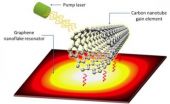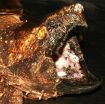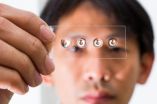(Press-News.org) DURHAM, N.C. -- A new study representing the largest study of animal intelligence to-date finds that animals with bigger brains and broader diets have better self-control.
Published this week in the journal Proceedings of the National Academy of Sciences, the study is part of a long history of research aimed at understanding the animal mind. Specifically, why are some species able to do things like make and use tools, read social cues, or even understand basic math, and others aren't?
Until now, most studies of animal intelligence have focused on only one or a few species at a time, explained co-author Evan MacLean of Duke University. But MacLean and other researchers working at the National Evolutionary Synthesis Center came up with an idea: if they could convince enough animal experts across the globe to conduct the same set of experiments, they could test ideas about how cognitive differences in the animal kingdom came to be in a much more rigorous way that wasn't possible before.
Working with nearly 600 animals representing three dozen species of birds and mammals in zoos and research facilities worldwide -- ranging from wolves in Austria and jays in the U.K. to spider monkeys in Mexico -- the researchers put the animals through two tests designed to measure "inhibitory control" -- a measure of brain function associated with the ability to control impulses and delay gratification. Most animals don't have to worry about buying one too many drinks or avoiding the all-you-can-eat buffet. But the ability to exhibit self-control could help animals wait for just the right moment to pounce on their prey, for example, or share food with relatives without first eating it all themselves.
In one test, researchers hid a piece of food in an opaque plastic cylinder made from a 2-liter soda bottle, and trained the animals to retrieve the treat by reaching around to one of the open ends. Then they switched out the opaque cylinder for a see-through one. To fish out the food, the animals had to resist the natural impulse to reach directly in front of them for the treat -- which would only cause them to bump their paws, beaks or trunks into the plastic -- and instead reach around through a side entrance as they learned before.
In another test, the researchers showed the animals where to find a treat hidden in one of three cups placed upside down on a table, then moved the treat to a different cup while the animals looked on. To get it right, the animals had to suppress the urge to keep looking under the first cup and search under the new cup instead.
Bonobos, gorillas and orangutans performed well on both tests, picking the correct cup or reaching for the right opening more than 90% of the time. But squirrel monkeys and a lesser-known primate called the Coquerel's sifaka did miserably, getting it right less than half the time.
Led by MacLean and Brian Hare and Charlie Nunn of Duke University, the researchers looked at a range of factors that could explain why some species excelled and others floundered.
Overall, the species with the highest scores on the self-control tests had bigger brains. Absolute brain size mattered, but relative brain size did not -- suggesting that species differences in self-control may be due to differences in how the brain is wired, rather than having big brains for their bodies per se.
In addition to brain size, the researchers also looked at whether lifestyle factors might play a role. One of the most widely accepted ideas is that animal intelligence evolved to deal with the demands of living in a group. The bigger the group, the better an animal needs to be at keeping track of social relationships and managing the delicate balance between competing and cooperating.
Surprisingly, group size didn't seem to matter for self-control, but within primates the researchers found support for another idea: Primates with superior self-control had more diverse diets, supporting the notion that animals owe their intelligence to the challenges of foraging for a wide array of foods, like fruit, that vary in ripeness and availability from one place and season to the next.
"Animals that rely on lots of different foods can't keep foraging in the same spots," MacLean said. They have to resist the tendency to return again and again to, say, the same fig tree or cache of nuts in favor of exploring new areas.
Previous studies have found links between various measures of cognitive ability and traits such as brain size or diet, but no other study has demonstrated a connection across such a wide range of species or on such a large scale.
Future studies will use their worldwide network of animal experts to try to understand how other aspects of the animal mind came to be.
"One particular aspect of cognition might be critical for one species but useless for another," MacLean said. "Intelligence isn't one-dimensional."
INFORMATION:
This study stemmed from a working group on comparative psychology that met from 2009 to 2011 at the National Evolutionary Synthesis Center in Durham, North Carolina. Learn more about their research at http://www.nescent.org/science/awards_summary.php?id=22 and https://www.nescent.org/wg_phylopsy/Main_Page.
CITATION: MacLean, E., et al. (2014). "The evolution of self-control." PNAS doi: 10.1073/pnas.1323533111
The National Evolutionary Synthesis Center (NESCent) is a nonprofit science center dedicated to cross-disciplinary research in evolution. Funded by the National Science Foundation, NESCent is jointly operated by Duke University, The University of North Carolina at Chapel Hill, and North Carolina State University. For more information about research and training opportunities at NESCent, visit http://www.nescent.org.
Animals with bigger brains, broader diets have better self control
Results represent the largest study of animal intelligence to-date
2014-04-24
ELSE PRESS RELEASES FROM THIS DATE:
New ultrasound device may add in detecting risk for heart attack, stroke
2014-04-24
Researchers from North Carolina State University and the University of North Carolina at Chapel Hill have developed a new ultrasound device that could help identify arterial plaque that is at high risk of breaking off and causing heart attack or stroke.
At issue is the plaque that builds up in arteries as we age. Some types of plaque are deemed "vulnerable," meaning that they are more likely to detach from the artery wall and cause heart attack or stroke.
"Existing state-of-the-art technologies are capable of determining if plaque is present in the arteries, but can't ...
New study links inflammation in those with PTSD to changes in microRNA
2014-04-24
With a new generation of military veterans returning home from Iraq and Afghanistan, post-traumatic stress disorder (PTSD) has become a prominent concern in American medical institutions and the culture at-large. Estimates indicate that as many as 35 percent of personnel deployed to Iraq and Afghanistan suffer from PTSD. New research from the University of South Carolina School of Medicine is shedding light on how PTSD is linked to other diseases in fundamental and surprising ways.
The rise in PTSD has implications beyond the impact of the psychiatric disorder and its ...
Your T-shirt's ringing: Telecommunications in the spaser age
2014-04-24
A new version of "spaser" technology being investigated could mean that mobile phones become so small, efficient, and flexible they could be printed on clothing.
A team of researchers from Monash University's Department of Electrical and Computer Systems Engineering (ECSE) has modelled the world's first spaser (surface plasmon amplification by stimulated emission of radiation) to be made completely of carbon.
A spaser is effectively a nanoscale laser or nanolaser. It emits a beam of light through the vibration of free electrons, rather than the space-consuming electromagnetic ...
Protecting olive oil from counterfeiters
2014-04-24
Just a few grams of the new substance are enough to tag the entire olive oil production of Italy. If counterfeiting were suspected, the particles added at the place of origin could be extracted from the oil and analysed, enabling a definitive identification of the producer. "The method is equivalent to a label that cannot be removed," says Robert Grass, lecturer in the Department of Chemistry and Applied Biosciences at ETH Zurich.
The worldwide need for anti-counterfeiting labels for food is substantial. In a joint operation in December 2013 and January 2014, Interpol ...
Breast cancer replicates brain development process
2014-04-24
New research led by a scientist at the University of York reveals that a process that forms a key element in the development of the nervous system may also play a pivotal role in the spread of breast cancer.
A research team, led by Dr Will Brackenbury, a Medical Research Council Fellow in the Department of Biology at York, has studied how voltage-gated sodium channels assist in the metastasis of cancerous tumours. These channels are found in the membranes of excitable cells, such as neurons, where they are involved in transmission of electrical impulses. However, the ...
Two new US turtle species described
2014-04-24
The alligator snapping turtle is the largest river turtle in North America, weighing in at up to 200 pounds and living almost a century. Now researchers from Florida and the University of Vermont have discovered that it is not one species — but three.
Examining museum specimens and wild turtles, the scientists uncovered deep evolutionary divisions in this ancient reptile.
Once heavily hunted for turtle meat — alligator snapper was the main ingredient of Campbell's Turtle Soup in the 1960s — the riverine populations have been deeply depleted and are of conservation concern. ...
Bake your own droplet lens
2014-04-24
WASHINGTON, April 24—A droplet of clear liquid can bend light, acting as a lens. Now, by exploiting this well-known phenomenon, researchers have developed a new process to create inexpensive high quality lenses that will cost less than a penny apiece.
Because they're so inexpensive, the lenses can be used in a variety of applications, including tools to detect diseases in the field, scientific research in the lab and optical lenses and microscopes for education in classrooms.
"What I'm really excited about is that it opens up lens fabrication technology," says Steve ...
How a plant beckons the bacteria that will do it harm
2014-04-24
RICHLAND, Wash. – A common plant puts out a welcome mat to bacteria seeking to invade, and scientists have discovered the mat's molecular mix.
The study published this week in the Proceedings of the National Academy of Sciences reveals new targets during the battle between microbe and host that researchers can exploit to protect plants.
The team showed that the humble and oft-studied plant Arabidopsis puts out a molecular signal that invites an attack from a pathogen. It's as if a hostile army were unknowingly passing by a castle, and the sentry stood up and yelled, ...
When things get glassy, molecules go fractal
2014-04-24
DURHAM, N.C. -- Colorful church windows, beads on a necklace and many of our favorite plastics share something in common -- they all belong to a state of matter known as glasses. School children learn the difference between liquids and gases, but centuries of scholarship have failed to produce consensus about how to categorize glass.
Now, combining theory and numerical simulations, researchers have resolved an enduring question in the theory of glasses by showing that their energy landscapes are far rougher than previously believed. The findings appear April 24 in the ...
Beauty Beast Virgin Hair Announces Opening of its Boutique Virgin Hair Showroom
2014-04-24
Beauty Beast Virgin Hair announces that its boutique is now open for business. Beauty Beast Virgin Hair is open Tuesday through Friday from 10am-6pm and Saturdays from 9am-5pm inside Le Prive Salon Studios located at 2800 Spring Rd S.E. Suite J-305, Atlanta, GA 30339. Mondays are open by appointment. The location brings a unique solution and customized service for stylists, salons and consumers by providing high end 100% Brazilian, Indian, Malaysian, and Peruvian virgin hair extensions. In store, Beauty Beast Virgin Hair carries full stock of lengths 12inches-30inches of ...
LAST 30 PRESS RELEASES:
Review article | Towards a Global Ground-Based Earth Observatory (GGBEO): Leveraging existing systems and networks
Penn and UMich create world’s smallest programmable, autonomous robots
Cleveland researchers launch first major study to address ‘hidden performance killer’ in athletes
To connect across politics, try saying what you oppose
Modulating key interaction prevents virus from entering cells
Project explores barriers to NHS career progression facing international medical graduates
Jeonbuk National University researchers explore the impact of different seasonings on the flavor perception of Doenjang soup
Two Keck Medicine of USC Hospitals named Leapfrog Top Teaching Hospitals
World-first discovery uncovers how glioblastoma tumours dodge chemotherapy, potentially opening the door to new treatments
A fatal mix-up: How certain gut bacteria drive multiple sclerosis
New AI tool identifies not just genetic mutations, but the diseases they may cause
Deep-learning model predicts how fruit flies form, cell by cell
Combination pills for high blood pressure may simplify treatment, improve long-term health
Immune system keeps mucosal fungi in check
Neurons within the brain use simple rules to localize genetic messages
Electrodes created using light
Second-hand gift-giving is a well-deliberated decision
How human interaction drove evolution to make bears less aggressive
National Poll: Few parents offer teens guidance on healthy eating during holiday season
Cannabis derivatives could provide new ovarian cancer treatments
Raising strong yeast as a petroleum substitute
Clues to the origin of hot Jupiters hidden in their orbits
Canada’s reduced pledge to Global Fund will impact domestic health
1 in 4 children with major traumatic injuries not cared for in pediatric trauma centres
Duke and Duke-NUS’ joint cross-population research to uncover "East-West" differences in disease and care
Scientists to ‘spy’ on cancer- immune cell interactions using quantum technology breakthrough
Tech savvy users have most digital concerns
Making lighter work of calculating fluid and heat flow
Normalizing blood sugar can halve heart attack risk
Lowering blood sugar cuts heart attack risk in people with prediabetes
[Press-News.org] Animals with bigger brains, broader diets have better self controlResults represent the largest study of animal intelligence to-date






